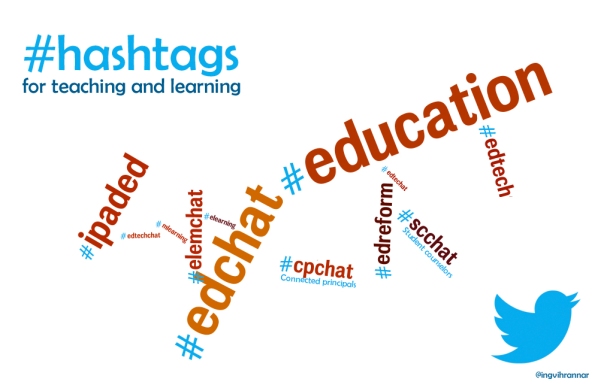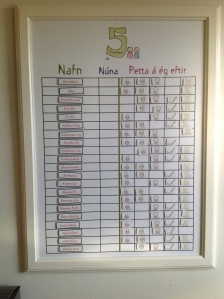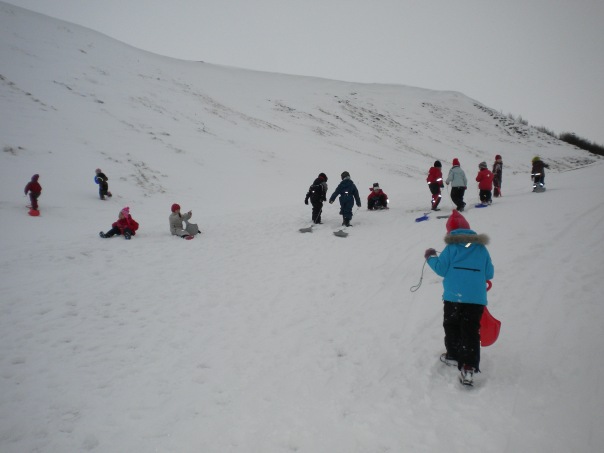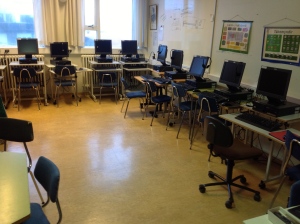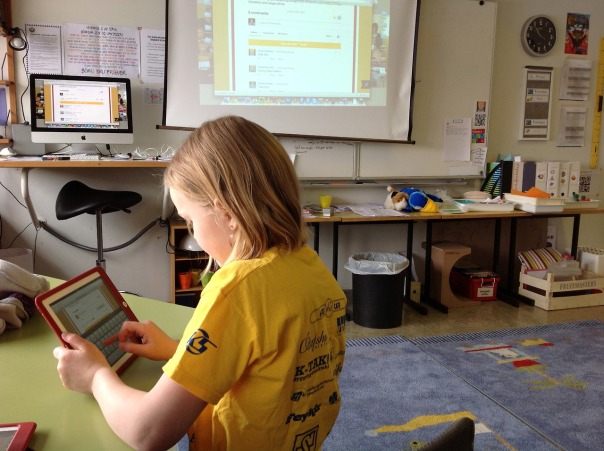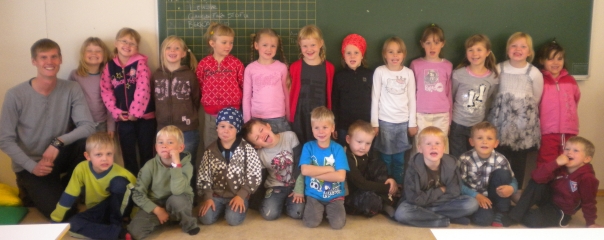I have got to say that I love my job as a elementary school teacher in Iceland, work with wonderful people who do their best every day & I love going to work.
My idea of a good day off is laying in the sun, reading books, journals, blogs and/or watching a TEDtalk… and I believe I’m not the only one so I decided to write this article so those of us who are interested in education, new ways of doing things and want to learn something new can talk about what we are interested in, when we like, regardless of where we live, what day it is or even what time it is.
We need to change the way Educators do Professional Development!
I’m sorry to say but the teaching profession is often an isolated and lonely one even though we are surrounded by people the biggest part of our day. A teacher is usually the only adult in the classroom, lunch is often with the students and our work area after class is in most cases in the classroom itself (because that is where our computer is). Our time outside of teaching is spent either preparing lessons, going to informational meetings in the school or writing reports. Our time to develop ourselves as professionals, discuss professional issues & exchange ideas is neglected or even ignored in many schools.

Professional development nowadays is often about everybody watch the same documentary, visiting a school or getting a lecturer into the school to talk about issues that most often only affect a small part of the staff but everybody have to attend.
In short: Professional development is usually decided by administrators and not the staff, a top-down management or a top-down approach. It’s easier for administrators to give everybody (both students and staff) the same education. Because if everybody get to learn what they want, when they want costs time, money and an incredible amount of preparation.
“It’s easier to build strong children than to repair broken men” -Frederick Douglass
Why did I start to shape my own Professional Development around my needs?
In the school year of 2012-13 I was implementing an iPad 1:1 initiative in my 3rd grade classroom at Árskóli in Iceland. I had been studying iPads in the classroom since the iPad came out in 2010, read articles, watched videos, tried apps and was the first teacher to go to Apple in Iceland and pitch the idea of iPad 1:1 (that is each student has his own iPad) in education in early 2011. I even travelled to the US during my easter break in 2012 and visited the fantastic Burley Elementary School í Chicago,IL. and saw how they were using iPads for teaching and learning.
When our iPads arrived in August 2012 I had acquired some knowledge and the things I didn’t know I just tried (which means: tried, failed, googled & tried again until I succeeded).

I had only a few people I could talk to, share experience and get feedback from that was beneficial. The discussion between the staff within a school are often fine but rarely did they deliver anything because, more often that not, other teachers didn’t understand what I was doing with iPads in the classroom, didn’t see the point and had no idea what I was talking about so I felt lonely and isolated.
How do we change teachers Professional Development?
There are no magic solutions out there. If people are not ready to learn something new, they won’t. It doesn’t matter if you send them to the same course year after year, e-mail articles to them to read, give them a whole day off to read the new Common Core… if they don’t want to learn, they won’t.
But this article is written for those of you that want to learn (and if you have read it to this point you are one of those).
This article is for those of you that do want to learn, grow, share your experiences with others and make connections. This article is for those that ask questions, that don’t know everything but want to, who want to become better and help others become that as well.
I was alone, almost, until I started using Twitter and a whole new world opened up for my professional development, transformed what I do as a teacher and I got in touch with professionals from all over the world who are dealing with the same problems as I am in my job.
I believe those who work within the educational field and haven’t discovered Twitter should do so now! (See instructions below).
What makes Twitter so great is that other people are not telling you what to read, watch, listen to or when you should do it. You decide, the professional development is personalised and comes from within. You might have the time and energy today to read an article but not tomorrow at the scheduled staff meeting where you re supposed to.
By putting mobile devices in the hands if the staff, a time to spare and support during the first steps people can share and discuss even though they don’t see each other that day or if they work in different parts of the town, country or the world. Even the computer in the classroom can be used to Tweet, if Twitter isn’t blocked at your school (which is a discussion I’m not even going to begin going into because that would be a whole new post). The only thing you need to use Twitter is access to the internet because the account is free (as well as the Twitter apps available from the App Store and Google Play store).
Many people have heard about Twitter in the past few years. A lot of people have signed up, tweeted once or twice and then given up because they don’t get the instant feedback they are used to on other social media sites and quit. (You don’t usually get feedback from your first tweet because you don’t have any followers when you sign up… you have to earn them by sharing good content and ideas).
Schools, states, municipalities, teacher unions and even the teachers themselves spend an enormous amount of money on Professional Development. Now with the introduction of Twitter people can more easily educate themselves, connect with other educators around the country and the world and read about the latest in educational reform as it happens.
“People who want to be better at what they do make time not excuses”.
(Read: Why do some teachers never have time for PD while others always make time)
You can tweet whenever you feel like, read articles, watch videos and really personalise your own professional development. But first let’s start with the basics….
What is Twitter?

Twitter is a micro-blogging platform where people can share ideas, articles, websites, pictures, information or news in 140 characters or less. It’s a cheap and simple way to share and receive information from anywhere in the world.
Anybody can see you profile and read what you write (unless you, for some reason, you protect your tweets and choose to have them private). Users can follow other users without having to be accepted or followed back, so your account is personalised to you.
But you should start by setting up an account before we go any further:
- You start by going NOW to twitter.com and create an account. You create a Twitter username (or Twitter handle) and put in your name as well so other users can search for you by your Twitter handle (@) or your name. Write down your password as well… don’t forget it!
- You write something about you and import a photo of you… no one takes an egg seriously.
 You then search for people to follow. Here is a list from Edudemic about people within education that you can follow: http://www.edudemic.com/2012/10/worldwide-education-twitter/
You then search for people to follow. Here is a list from Edudemic about people within education that you can follow: http://www.edudemic.com/2012/10/worldwide-education-twitter/- You observe, read and see what interest you before posting and you’ll slowly understand what Twitter is all about.
- ….you experiment.
- You go back to this article and understand a little bit more what it’s about.
- Don’t be surprised if you don’t understand Twitter right away and don’t quite understand why you are doing this… I promise you if you have read this post up until here then you have the interest and spark it takes to understand Twitter.
- The most important thing is don’t be afraid to make mistakes and take your time. It took me a few months to understand this.

Good to know: On Twitter there are a few words that users have to be familiar with to understand how the Twitter community works, what people are saying and why. Understanding the following words, phrases, abbreviations will make your Tweets better and more likely to reach the right target group/audience:
- Tweet: 1 to 140 character message.
- Retweet (RT): Re-posting another Tweet so that your followers will see them even thought they are not following the initial Tweeter.
- Feed: All the newest tweets from the people you follow.
- Handle: Your username on Twitter marked with a @ symbol (f.x. @ingvihrannar)
- Mention (@): When someone mentions your name in a tweet by using @ before your username to acknowledge you or send you a message.
- F.x: @TechNinjaTodd Really loved your picture from class. #edchat #edtech
- Hashtag(#): Tweets often have Hashtags (#) and a word attached to it. By adding a relevant Hashtag (like #edchat or #education) to a tweet or a discussion you are essentially categorising your tweet to a certain discussion or topic. Other users can search for hashtags and see all the tweets that have that particular hashtag and read the discussion about that particular topic in real time.
Explaining a Tweet:

 How can schools use Twitter?
How can schools use Twitter?
- Create a hashtag where the staff use when they tweet articles, news and thoughts that everybody can find easily. F.x. #HavenElementary
- At a staff meeting there is a certain topic. The staff is split up into groups and each group has to compose at least one tweet about their results and sign it with the meetings hashtag and/or the schools hashtag f.x. #firesafetyathaven #havenelementary
- Administrators can Tweet about what is going on at the school for parents and other members of the community to stay informed.
- Each class could have its own Twitter account + hashtag and tweet what they are doing.
- The teacher posts questions, homework and so on to students and gets questions & feedback from them.
- Students tweet from field trips, report what is going on, ask questions and so on.
- The class is divided up into groups. Each group has one chapter in a book and they should tweet the main points to the rest of the class.
- They could even start Parody accounts and tweet as different characters from a story. Each student representing one character in the book/story.
Now you should be able to get going on Twitter.
- It’s alright if you don’t know everything… the most important part is trying, failing and trying again.
- Start by observing, read articles, then read this article again and slowly start to tweet and retweet what you find.
- If you don’t get a response to a question at school, or even if you do, share your thoughts with others and see if they have a different point of view.
- Don’t only share things that work… but also the things that don’t work.
- Expand your PLN (Personal/Professional Learning Network) by following those that interest you.
- Recommend great Tweeters to other people by tweeting their Twitterhandle (@) on Fridays and putting the hashtag #FF (which stands for Follow Friday).
- Don’t try to read everything… you will find what you are meant to find. You will miss 99,99% of the things going on on Twitter but you will still get more information than the people who spend their down time watching cat videos…
- If you can’t figure out how something works… Google it and you can also send me a message on Twitter to @ingvihrannar (and I’ll Google it).
The future is now, grab it.
Happy Tweeting.
Ingvi Hrannar Ómarsson
http://twitter.com/ingvihrannar
Other useful stuff:
